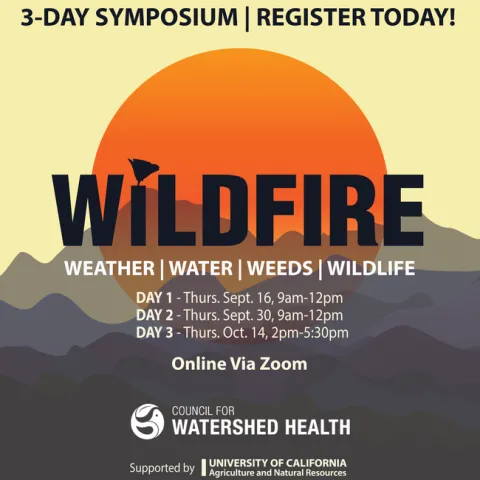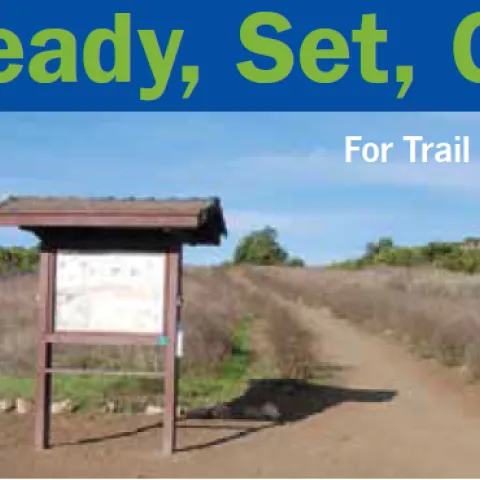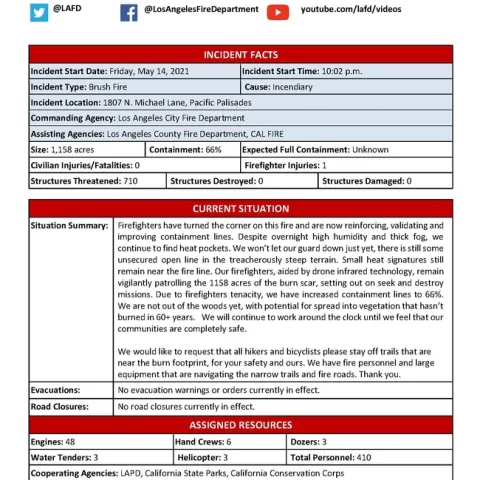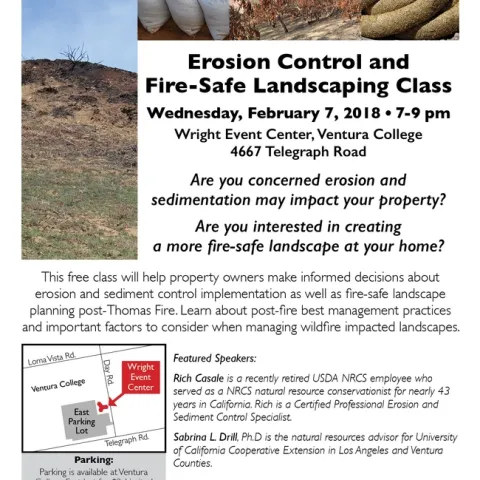Fire safety in the wildland-urban interface starts in the home, with the use of fire-resistant building materials and architectural features, good practices to avoid starting fires in and around the home, and a good fire response plan for your family.
Beyond the home, develop a fire-resistant landscape where plants and hardscape are maintained so that they do not easily transmit fire. Establish your defensible space so that the risk of fire transmission to your property is reduced, and fire fighters can safely protect your home. Fire is a part of the natural environment in Southern California. There is no way to completely ensure that your home will not be exposed to wildfire. If you live in the wildland-urban interface, it is not a question of IF a fire will occur, but WHEN.
Preparation for wildfire requires that YOU take responsibility for your safety, property, and pets in the event of a fire. Maintain your property to reduce the risk of damage during a wildfire, and be fully prepared to evacuate.
What is the Wildland Urban Interface?
The wildland-urban interface (WUI) is the area where urban and suburban development meets undeveloped areas containing natural vegetation. It can be a beautiful, quiet place to live, but with the benefits of being near nature come risks. One of the most pressing is wildfire, but others include risky interactions with wildlife such as bears and mountain lions, as well as physical phenomena such as floods and landslides.
Within the greater WUI, areas are classified as to their relative fire hazard severity zones. These are areas in mountains, foothills, and canyons where adjacency to vegetated areas, difficulty of access, and weather patterns pose greater risk of wildfire. CAL FIRE and the fire response agency in each local jurisdiction have determined where these areas are, and require the management of vegetative fuels near buildings. To find out if your property is in a fire hazard severity zone, contact your local fire agency.
Sustainability
The United Nations defines sustainable development as “meeting the needs of the present without compromising the ability of future generations to meet their own needs.” In the wildland-urban interface areas of Southern California, living sustainably means protecting yourself, your family, and your property from risk, while also protecting natural habitat. Native plants are essential ecosystem components and provide habitat for native birds, butterflies and other wildlife. California is known as a global hotspot for its diversity of unique plants and animals. To preserve this natural heritage, it’s important to live responsibly in the wildland-urban interface. For more on our State’s threatened biodiversity, visit http://www.dfg.ca.gov/biogeodata/atlas/
Good fire preparation in your landscape can help protect wildlands from damage, but sustainable and fire-safe gardeners also conserve water, limit the use of potentially harmful chemicals such as fertilizers and pesticides, and avoid invasive plant species. Sustainable fire-safe landscaping should be easy to care for. Many native and California-friendly plants grow slowly and maintain high levels of moisture in their leaves and stems with little irrigation. By choosing these plants, you can protect the health of neighboring habitat and create a beautiful low maintenance garden.
Learn more as you navigate this web site using the buttons on the left and right.








